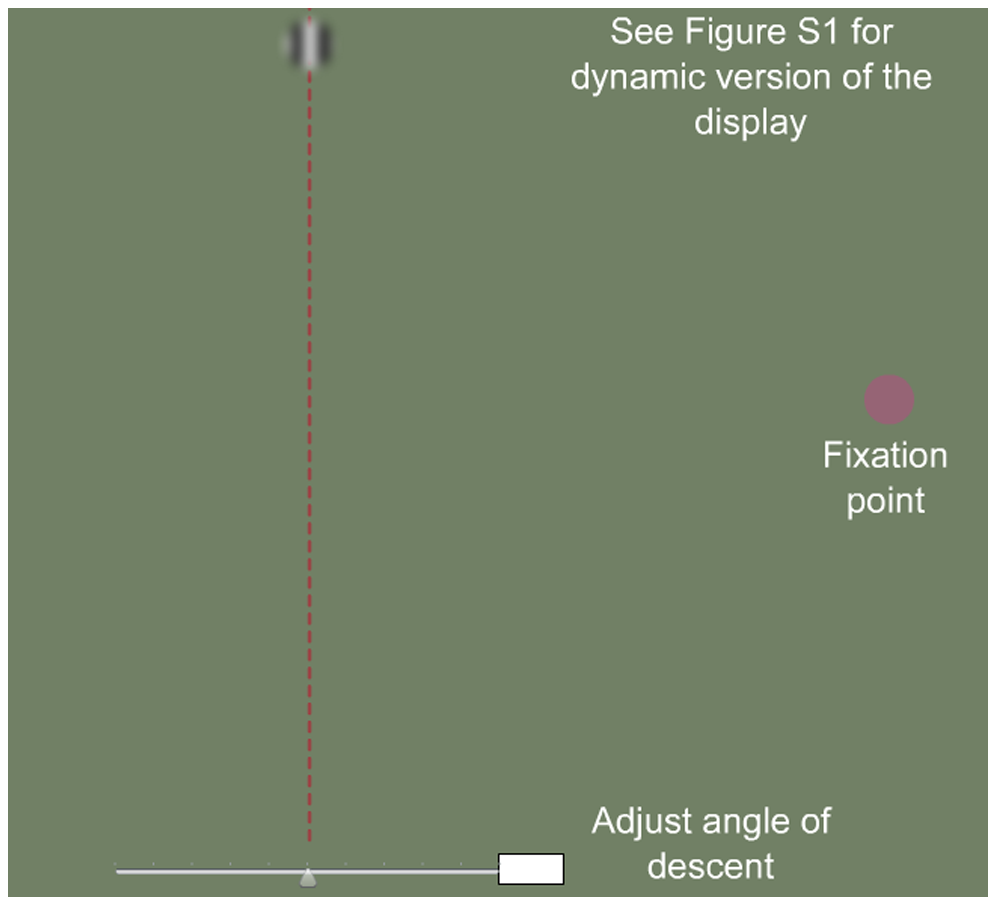Perception and Action
126
Learning Objectives
Be able to explain what the curveball illusion is.
Know that the curveball illusion is an example of when it’s better not to update action plans with new perceptual information.
The human visual system does not treat all parts of an image equally: the central segments of an image, which fall on the fovea, are processed with a higher resolution than the segments that fall in the visual periphery. Even though the differences between foveal and peripheral resolution are large, these differences do not usually disrupt our perception of a seamless visual space. The curveball illusion represents a motion stimulus in which the shift from foveal to peripheral viewing creates a dramatic spatial/temporal discontinuity.
In the curveball illusion, a disk descends vertically from the top center of the screen to the bottom center, while motion inside the disk is from right to left. If an observer tracks the disk foveally (looking directly at the disc), the disk appears to descend vertically; however, if an observer shifts their gaze to the right so that the disk falls in the visual periphery, the disk appears to descend at an slanted angle. This shift also occurs when a baseball player will hit a baseball—the player will initially place the ball within their foveal vision as it is thrown but ultimately switch to their peripheral vision to strike the ball.
As a result of this illusion, batters often report that the flight of the ball undergoes a dramatic discontinuous shift in position as the ball nears home plate, also called the “break.” The curveball’s “break” is a perceptual illusion caused by the inability of peripheral vision to maintain separate representations of different motion signals and gaze shifts between foveal and peripheral vision during the curveball’s flight. The discontinuity is therefore the result of new perceptual information from the change in the neural response at the transitional moment when the image of the ball is transferred from the fovea to the periphery (or vice versa).

The Curveball Illusion involves “feature blurring”—position and direction of motion get blurred together in confusing ways in peripheral vision, where receptive fields are large. An illusion that works off of similar principles is the Rotating Snakes illusion. That one has a very cool possible explanation related to contrast-dependent action potential latencies in V1 (how long it takes a neuron to respond to a stimulus depends on how strong the stimulus is).
Test your visual acuity with this video of the curveball illusion!
Shapiro A, Lu Z-L, Huang C-B, Knight E, Ennis R (2010) Transitions between Central and Peripheral Vision Create Spatial/Temporal Distortions: A Hypothesis Concerning the Perceived Break of the Curveball. PLoS ONE 5(10): e13296. https://doi.org/10.1371/journal.pone.0013296

